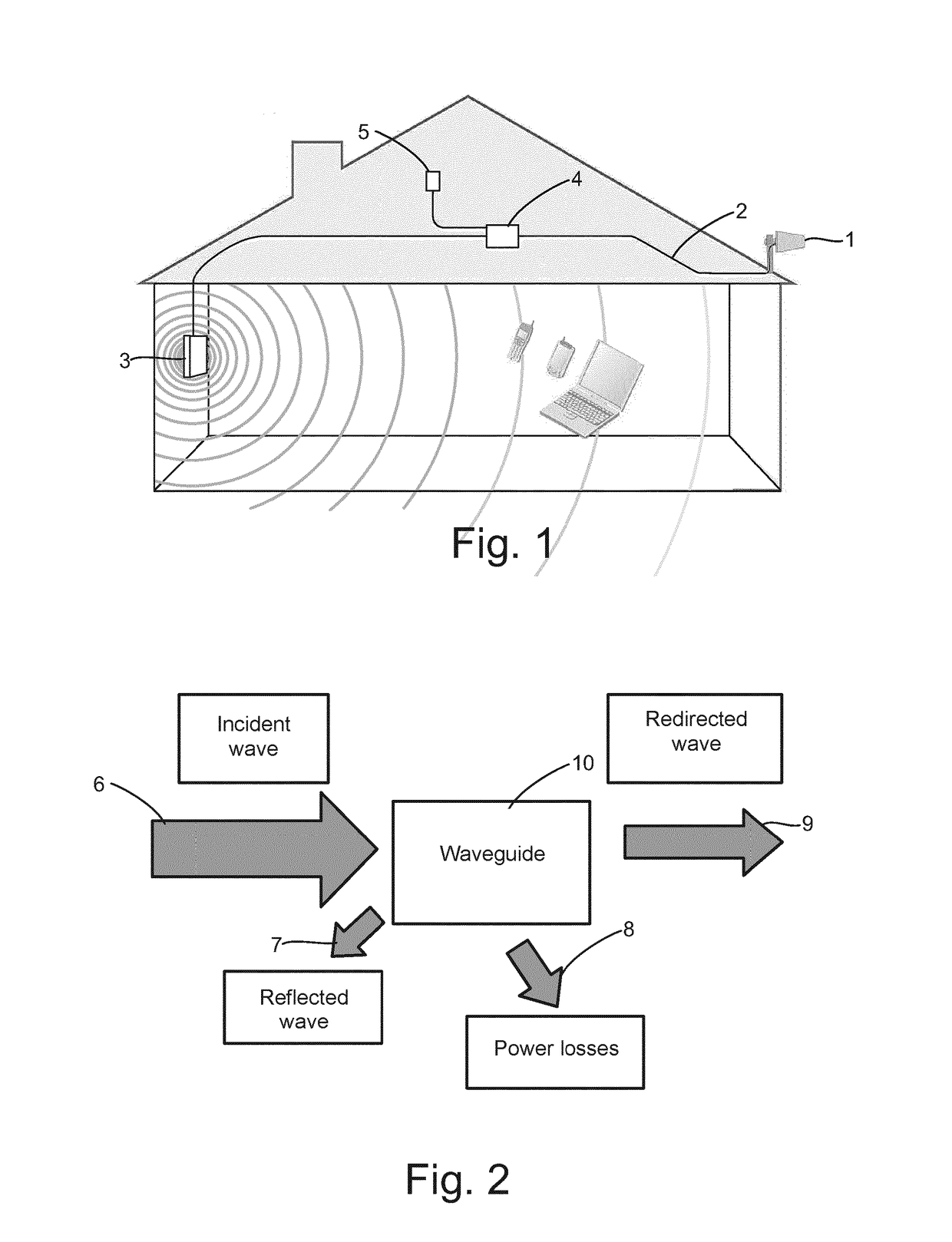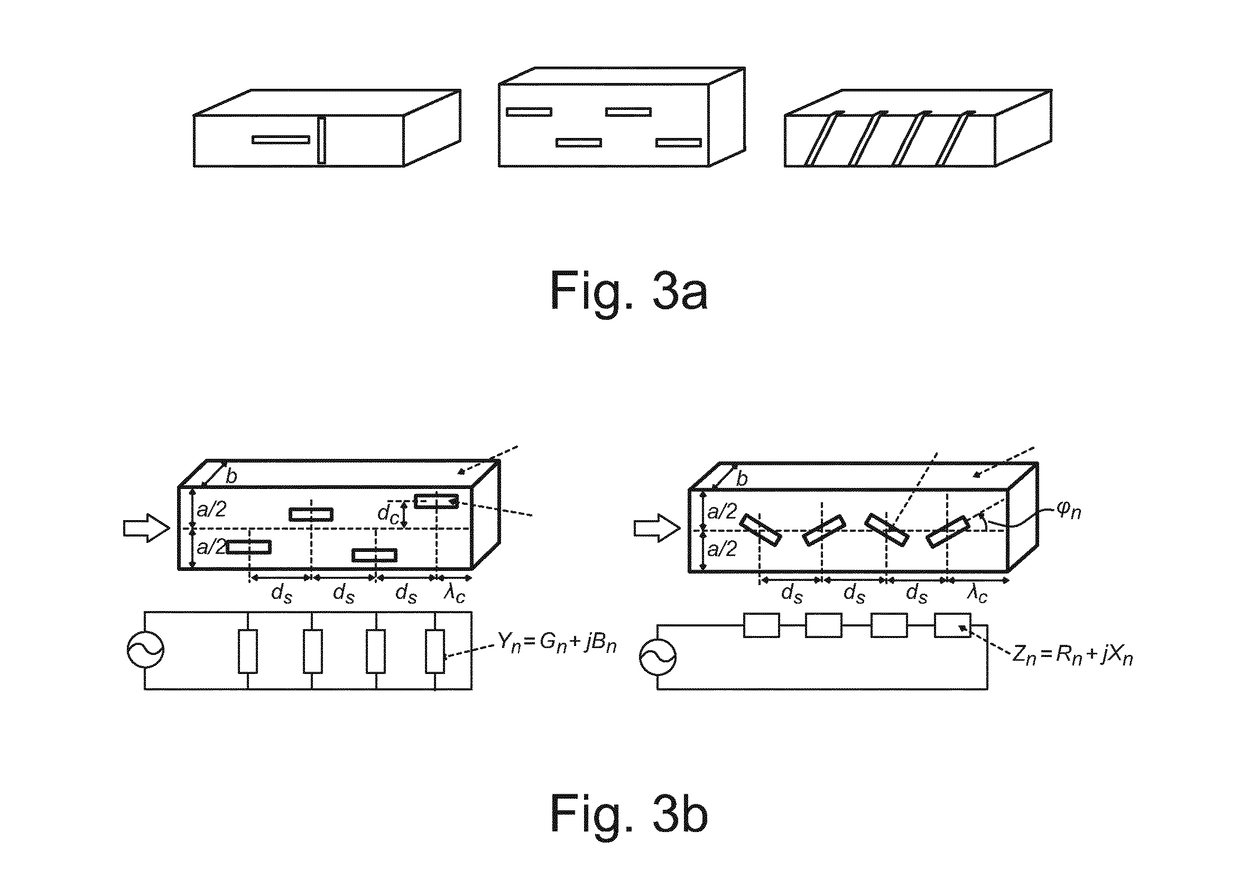Device and method for guiding electromagnetic waves
a technology of electromagnetic waves and devices, applied in waveguides, waveguides, particular array feeding systems, etc., can solve the problems of unbalanced currents of cables, inability to use mobile phones inside buildings, attenuation of even ten decibels, etc., to improve building thermal insulation, improve efficiency, and increase the reception area
- Summary
- Abstract
- Description
- Claims
- Application Information
AI Technical Summary
Benefits of technology
Problems solved by technology
Method used
Image
Examples
Embodiment Construction
[0030]For the sake of clarity, some terms used in the description are now defined. A waveguide refers to a conductive structure that is capable of receiving electromagnetic radiation and re-radiating this received electromagnetic radiation. The waveguide is a tubular structure consisting of or coated with a conductive material, and intended for transmitting electromagnetic signals, particularly signals of high frequency (UHF, microwave range). The cross-sectional shape of the waveguide can be rectangular, square, triangular, polygonal, circular, or any other cross-sectional shape suitable for the purpose. A cavity resonator refers to a structure in which, upon propagation of electromagnetic signals, standing waves are formed at a frequency specific to the cavity resonator, that is, at the resonance frequency, or its multiples. To make this possible, the cavity resonator is provided with a surface that reflects electromagnetic radiation back, such as an end or ends of the cavity reso...
PUM
 Login to View More
Login to View More Abstract
Description
Claims
Application Information
 Login to View More
Login to View More - R&D
- Intellectual Property
- Life Sciences
- Materials
- Tech Scout
- Unparalleled Data Quality
- Higher Quality Content
- 60% Fewer Hallucinations
Browse by: Latest US Patents, China's latest patents, Technical Efficacy Thesaurus, Application Domain, Technology Topic, Popular Technical Reports.
© 2025 PatSnap. All rights reserved.Legal|Privacy policy|Modern Slavery Act Transparency Statement|Sitemap|About US| Contact US: help@patsnap.com



